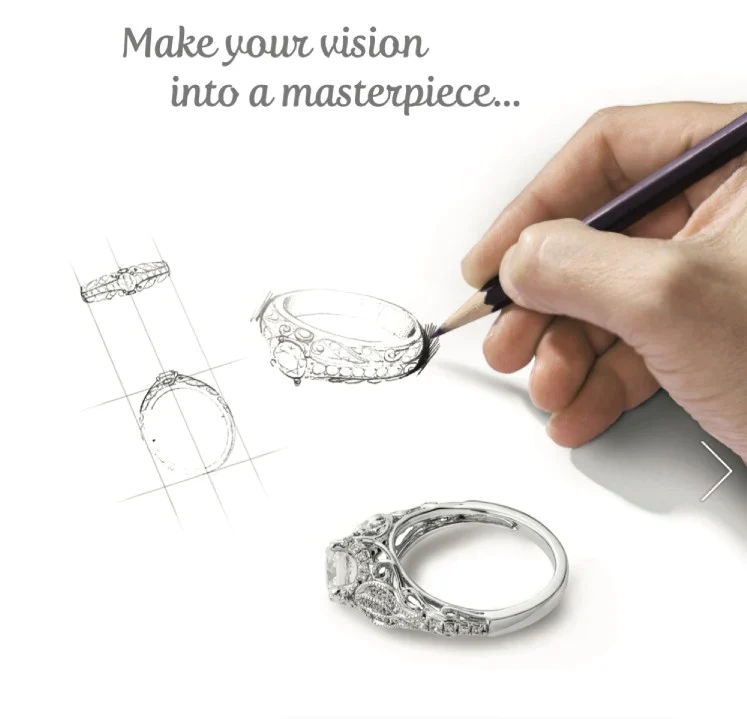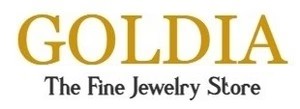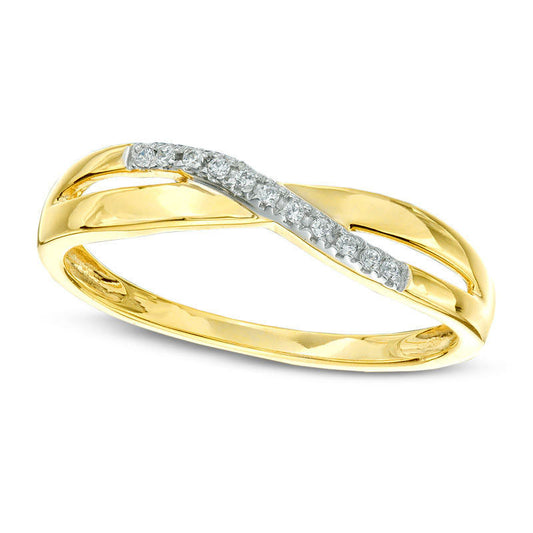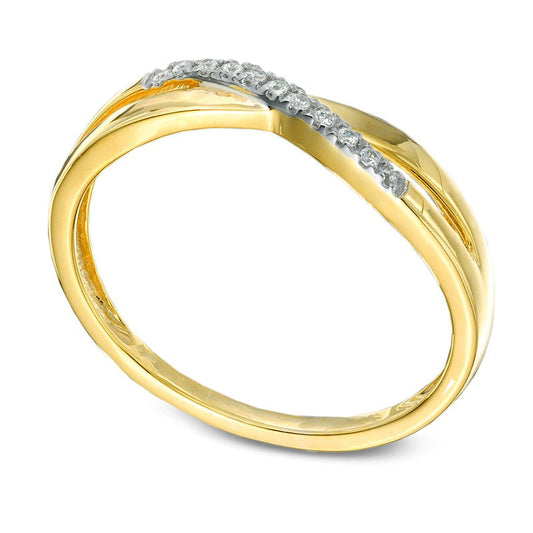Criss Cross Diamond Band
Any piece of jewelry that features a diamond is desirable by most people. Now, imagine a diamond set in a gorgeously shaped ring. That’s what you get in criss cross diamond bands.
What Is A Criss Cross Diamond Band?
This is a ring that features a criss cross shape and diamonds. The criss cross can be the whole ring or simply engraved onto the front of the ring.
The criss cross features two lines that intersect at a point. It is a gorgeous design for any ring regardless of the occasion.
Before we guide you on buying your band, let’s take a look at its symbolism.
Symbolism Of A Criss Cross Diamond Band
The components of this band each hold their symbolism. So, let us view it in that manner.
Criss Cross
-
It symbolizes that there is strength in unity.
-
The criss cross can be said to mean the intertwining of lives. • It represents the love between two people whether platonic or romantic.
-
It symbolizes crossing paths with good things.
Diamond
This diamond has for a long time been used in weddings and engagements. Some of the meanings attached to it are:
-
Love
-
Purity
-
Beauty
-
Strength
-
Perfection
-
Rarity
-
Long life
-
Good health
-
Unity
Things To Consider Before Buying Your Criss Cross Diamond Band
There are a lot of things to consider before you buy your criss cross diamond band. Let’s take a look at the gemstone which is the main component of this ring.
Diamonds
This gemstone is practically the most popular and sought-after stone. It is known for its unique sparkle and strength.
Features Of A Diamond
-
It is the hardest naturally occurring gemstone on the earth. • It has a whopping score of 10 on Moh’s scale of hardness. • It reflects the light that enters it as white light (brilliance) or (fire). • It is a very durable gemstone.
-
It is mostly found with inclusions ranging from a large amount to nothing at all.
Types Of Diamonds
Generally, diamonds exist in two forms either colorless diamonds or fancy diamonds.
Fancy diamonds are stones that break out of the D – Z color scale. They feature prominent shades of different colors and may be more expensive than colorless diamonds.
Some of the gorgeous fancy colored diamonds to consider for your bands are:
-
Brown or champagne diamonds
-
Blue diamonds
-
Green diamonds
-
Orange diamonds
-
Pink diamonds
-
Red diamonds
-
Yellow diamonds
-
Black diamonds
Brown Or Champagne Diamonds
These are the most common colored diamonds and they even make an appearance in the D – Z scale. They occur due to the presence of nitrogen in the diamond’s crystal structure.
The colors range from light champagne brown to more vivid colors. Since they are the most common of the fancy diamonds they are also the most affordable of the fancy diamonds.
The biggest mine of brown diamonds is the argyle mines. The name “champagne” diamond is credited to this mine as well. However, this mine closed in 2015 so that has also affected the availability of champagne diamonds.
Blue Diamonds
These diamonds get their color from the presence of boron in the crystal lattice structure. Their formation is said to occur up to 4 times deeper into the earth’s surface than any other fancy diamond.
It is quite rare to find deep or high-intensity blue diamonds. They occur more commonly in the light to pale blue variations. If you do want a blue stone for your criss cross diamond band, you should prepare for a long search and a much higher cost.
Green Diamonds
Most people consider the formation of a green diamond the most fascinating of all fancy diamonds, and they are correct.
The green diamond is formed when radiation displaces the carbon atoms in the crystal. This causes the diamond to reflect green light to the eye when viewed.
It is difficult to tell if a green diamond has been artificially enhanced so the girdle of any cut of the diamond is left rough. This rough girdle is called a “natural” and it allows for proper testing by the GIA and other gemological institutes.
Orange Diamonds
Just like champagne diamonds, it is the presence of nitrogen that gives orange diamonds their color. Of course, this is so because of a certain proportion, position, or composition of the nitrogen element in the crystal lattice structure.
Most orange gemstones are found with yellow, brown, or even purple undertones. It’s quite rare to find a high-color intensity orange diamond. The diamond should be more pricey but the low demand leaves the prices relatively affordable.
Pink Diamonds
The origin of the formation of pink diamonds attracts a lot of controversies among scientists. They claim that these diamonds are formed by a process called plastic deformation and they do not begin with a pink hue. This makes pink diamonds one of the rarest diamonds on earth.
It is a stunning choice for your criss cross diamond band. Just remember that it is very expensive to acquire due to its rarity.
Red Diamonds
These diamonds are the rarest fancy diamonds and are extremely valuable. As you would imagine, the formation of these diamonds is not certain similar to the pink diamonds. Scientists believe it to also be formed due to plastic deformation.
Yellow Diamonds
This gemstone is formed similarly to the brown and orange diamonds. It is also a relatively common gemstone that is formed due to the presence of nitrogen in a diamond’s crystal structure.
As with other fancy diamonds, the deeper or more intense yellow diamonds are more expensive. Due to it being relatively widespread, it is a rather affordable fancy gemstone.
Black Diamonds
These fancy diamonds have become increasingly popular. This Diamond is a bit fascinating because it is not truly black. Rather, it has numerous black inclusions that give it its distinct color. Graphite, hematite, and pyrite are the common inclusions found in black diamonds.
The inclusions give the diamond an opaque appearance so it will hardly emit fire or brilliance. These diamonds are mostly desired for their color since they lack the level of sparkle that other fancy diamonds have.
Shapes Of Diamonds
After choosing the color of the diamond you want for your criss cross diamond band, the next thing you would want to do is select a shape for the diamond. These are the popular diamond shapes:
-
Round cut
-
Emerald cut
-
Princess cut
-
Cushion cut
-
Heart cut
-
Marquise cut
-
Oval cut
-
Pear cut
Round Cut Diamonds
These diamonds exhibit the most remarkable level of brilliance so they are the most sought-after shapes. It features 58 facets which are reasons for its sparkle.
Emerald Cut Diamonds
This shape was originally used for emeralds. It features a long table and a step-cut pavilion. It is a rectangular shape with beveled edges.
Princess Cut Diamonds
These diamonds are similar to both emerald- and round-cut diamonds. In the sense that it is a slightly rectangular shape but it
appears to be a square to the untrained eye. It is a cut that also exhibits remarkable sparkle. It is even referred to as “square modified brilliant” in GIA certifications.
Unlike emerald cut diamonds, the princess cut has four distinct corners so it is likely to get chipped especially if there are inclusions at those corners.
Cushion Cut Diamonds
If you want to go for a vintage feel with your criss cross diamond bands then this cut is for you. It is a modernized version of the old mine cut which is a vintage cut style. It has curved edges that make it resemble a pillow, hence, the name.
Heart Cut Diamonds
There isn’t much to say on this one as the name already says it all. The diamond is cut into the shape of a heart. It may cost a little more due to the precision required to form the heart shape on a diamond.
Marquise Cut Diamonds
The cut features a round elongated shaped diamond with relatively sharp points at two ends. There is a tendency for marquise diamonds to show a “bow-tie” effect which is generally unpleasant. It is a gorgeous ring style though.
Oval Cut Diamonds
This is simply an elongated form of the round-cut diamond. It is a gorgeous shape and is perfect for your diamond bands.
Pear Cut
This shape is also referred to as the teardrop cut diamond. It is curved on one end and narrows to a point, making it resemble a teardrop.
Grading Of Diamonds
After you have selected the diamond and its shape for your criss cross diamond bands, the next thing is to determine its quality.
There is no standard as to what grade or quality of a diamond is the best. It all depends on what you like and what seems good to you.
Still, there are four Cs that govern the grading of a diamond. The Cs also determine the diamond's value – in other words, how expensive or cheap it will be.
These four Cs are:
-
Color
-
Cut
-
Clarity
-
Carat weight
Color
If you are going for a colorless diamond, you would refer to the D – Z grading scale. As the letters on the scale go down incrementally the level of nitrogen in the crystal lattice increases resulting in yellowish diamonds.
Typically, you will need to compare the diamond with the metal you are getting it in to see how it works. For instance, a yellow gold ring will mask the presence of any slight yellow tones in a diamond so you can go for a diamond a little down the scale. While a white gold ring will accentuate the presence of any slight yellow or brown tone in the diamond, so you will need to move a little higher up the scale.
There is also a general grading scale for fancy diamonds, it ranges from faint to fancy vivid. The more intense the color of the diamond the higher the cost. You don’t necessarily have to follow the grade scale here. Just get the diamond that looks beautiful to you.
Cut
This is a very important C in diamond grading. Most people judge the beauty and quality of a diamond by the sparkle it emits. It is the way the diamond is cut that will determine the level of brilliance it will give off.
Generally, the higher the number of facets the greater the sparkle. This is not always the case though as a poorly cut gem no matter the number of facets it has will be lifeless.
So, this is the C that most people concern themselves with when dealing with criss cross diamond bands. If you are big on sparkle then this is where you should put your money.
Clarity
If you’re getting a black diamond you will not concern yourself with clarity at all. Why? Well, it is the inclusion that makes a black diamond a black diamond. Whereas clarity deals with the level of inclusions present in a diamond.
The inclusions can be found in or on the diamonds. Some diamonds are mined with inclusions already present in them while others get their inclusions during the cutting process.
For simplicity’s sake, diamonds follow a clarity grade scale ranging from flawless(FL) to included(I). We recommend that you go for a diamond that shows no visible inclusions – that is, a diamond that is eye-clean. It doesn’t necessarily have to be at the top of the scale.
Carat Weight
This is simply the weight of a diamond. One carat is about 0.2 grams or the weight of a quarter of a raisin. Most people think that larger carats mean the diamond will appear larger. This is not true, it is the diamond shape and cut that will determine how big it will look.
Some diamonds are cut with their weight in their belly while others have their weights in the pavilion. Contact a jewelry expert to find which shape will look bigger in a certain carat size.
The carat size does not directly impact the quality of a diamond but it does increase its cost. This is because larger carats require a larger amount of rough diamonds to be cut. If your budget allows a large
carat, go for it. Just remember not to neglect the other Cs particularly cut.
Lab Grown Diamonds
The procedures used in the mining of even the smallest carat of diamonds cause a lot of damage to the earth. So scientists have studied the formation of diamonds and can now replicate the exact conditions a diamond undergoes within the earth.
Lab-grown diamonds are the real deal. They have the same features as natural mined diamonds. The only upside is that when you get a lab-grown diamond for your criss cross diamond band, you would have peace of mind knowing that you are purchasing an environmentally friendly gemstone.
Where Can I Get A Criss Cross Diamond Band?
You should be able to find these gorgeous rings at your local jewelry store. If they don’t stock it then you should look online. A great place to start is Goldia, where we have a gorgeous collection of criss cross diamond bands that are sure to wow you.
Who Should I Get A Criss Cross Diamond Band?
It’s not like this is an engagement or an anniversary ring that is specifically meant for your significant other. You can get these rings for anybody in your life even in the absence of a celebration.
It’s a perfect gift for mother’s day, birthdays, graduations, job promotions, Christmas, Hanukkah, Valentine’s, and whatever holiday or celebration you can think of!
How To Care For Your Criss Cross Diamond Band
Going to the store, purchasing the ring, and wearing it is one thing but taking care of it is another. Unless you like your ring looking dull and dirty you should regularly carry out maintenance practices for it.
First, let's talk about cleaning your diamond band. You may decide to take it to a jewelry store for thorough cleaning but you can still do some basic at-home cleaning.
-
Get a bowl and fill it with water and mild dish soap.
-
Use a soft brush such as a toothbrush to clean the diamond band. Make sure to remove every visible dirt on the body of the ring. • Once the diamond band is clean, rinse it under running water. • Use a soft towel to pat dry it or leave it to air dry.
-
Store the band in a fabric-lined jewelry box that is dived into compartments.
We’re sure you can agree with us that the criss cross diamond band is beyond stunning and is perfect for you! Check out our lovely collection at Goldia today!



























